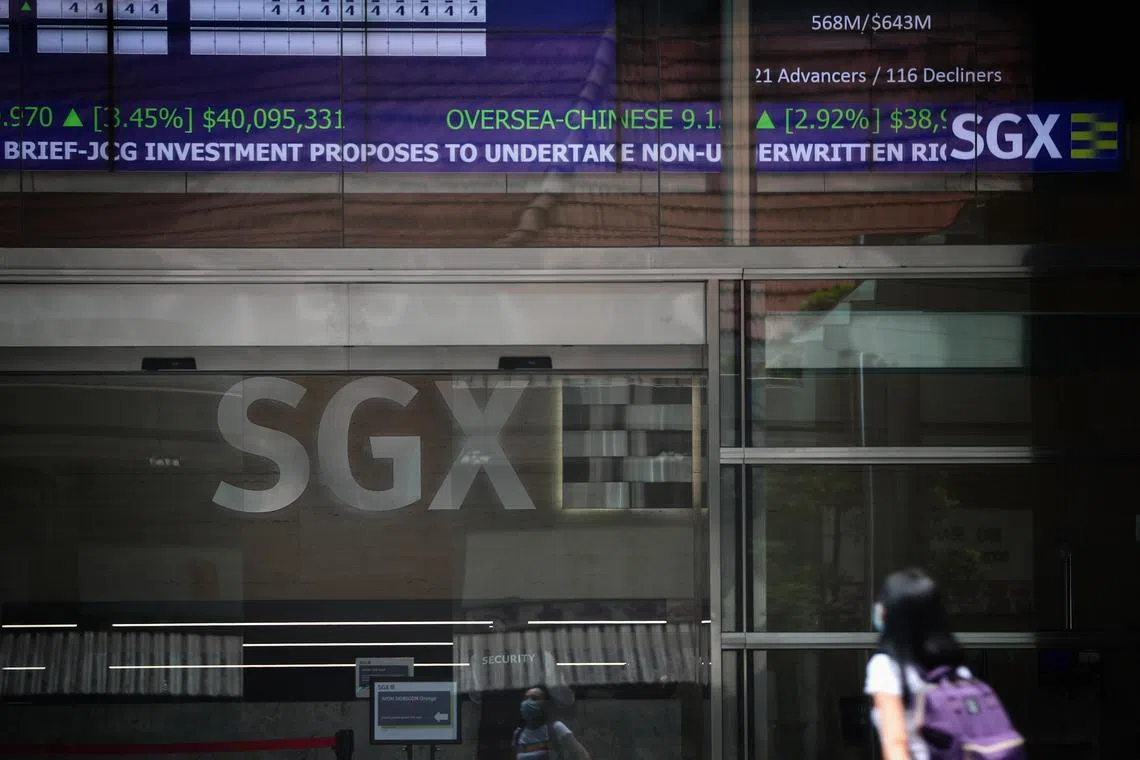Home can be our best safe haven when it comes to investing in bonds
Sign up now: Get ST's newsletters delivered to your inbox

It would be a good idea to stick to funds that have at least five years of proven track record in managing Singdollar bonds.
PHOTO: ST FILE
Patrice Conxicoeur for The Straits Times
Follow topic:
SINGAPORE – Famed investor Warren Buffett once said: “Only when the tide goes out do you discover who’s been swimming naked.”
He was referring to firms that can obfuscate their true natures during good times, but whose true natures are revealed for all to see when the chips are down.
The same may apply from a financial perspective to investors navigating the choppy waters of a turbulent market.
When the current storm passes and the tide goes out, it will be clear which investors are well equipped to swim ashore and which are swimming naked.
Financial markets recently witnessed how assets once deemed “risk-free” turned risky when the 30-year Treasury yield more than quadrupled from the Covid-19-era low of 0.995 per cent on March 9, 2020, to a recent high of 4.378 per cent on Oct 24, 2022.
The world has never seen such a fourfold surge in yields within such a short time, and as we witnessed recently, Silicon Valley Bank was not prepared for the turn of the tide.
Nobody truly knows when the tide will turn. So before it goes out, make sure you have the right swimming gear on before making the jump. Long story short: Be well equipped.
To do so, the starting point should be appropriately substituting duration for credit spreads in high-quality corporate issuers, while maintaining similar or even lower overall market beta.
To achieve this, we need to diversify across multiple countries and sectors to reduce idiosyncratic risk; do proper homework and analysis on the companies whose bonds we invest in; and hedge away any unwanted currency or interest rate risk.
Finding a stable buoy in rough market waters
In our 2023 Singapore dollar bonds outlook released earlier this year, we highlighted the fact that such bonds tend to be considerably less volatile than US dollar bonds of similar credit rating and tenor. Hence, a good mix of Singapore dollar and US dollar bonds (which can be higher yielding) could be beneficial to an investor’s portfolio.
The next step is to diversify by buying bonds across various countries, sectors, tenors and credit ratings. There is no magic minimum number of securities that an investor should hold in his portfolio. Mr Benjamin Graham, “the father of financial analysis”, put the number at between 10 and 30 for a stock portfolio. But bonds are traded over the counter and are generally less liquid than stocks, so a higher number would be beneficial.
Professional asset managers tend to hold even more, for example, HSBC’s Singapore Dollar Income Bond fund held over 180 bonds as at end-March.
We’ve made our case for Singdollar bonds being a suitable buoy against choppy waters. Now you’re ready to take a dive, what’s next? Suiting up, of course.
But who’s going to give you the best fit you need to better navigate the tides? Here are some key criteria for identifying a suitable investment manager.
Access to solid research and knowledge of Asian bond markets forms the foundational basis for any investor planning to take a dive into this asset class.
Local insights and support are also critical to give you a better knowledge of the lay of the land from an investment perspective.
Turbulent markets can create “sink or swim” situations where weather-tested experience and a solid track record truly count. Thus, it would also be a good idea to stick to funds that have at least five years of proven track record in managing Singdollar bonds.
Finally, proper portfolio management is not complete until a full assessment of risk is carried out and any unwanted risks are hedged away. In the case of a Singdollar-based fixed-income investor, this often means any remnant currency or duration risk.
The portfolio manager’s job includes managing these risks down, while the credit research team helps in credit risk management via bond selection.
All professional swimmers will have their own stories of how they successfully navigated turbulent waters, but one thing is for sure – they keep swimming and don’t give up. Market uncertainty (and volatility) is a certainty in any asset class, and exiting the market at the wrong time may mean significantly lower returns.
Consistency is key. Fixed-income returns and, consequently, opportunity costs would be smaller, but the same inherent logic applies.
In the turbulent waters of the current market, don’t be caught by the waves. Swim well-equipped, avoid the deep end, and always keep swimming.
Better yet, reach out towards the stable buoy that Singdollar bonds can present. It could be the thing that keeps you covered and afloat while other investors are swimming naked.
The writer is CEO and head of South-east Asia at HSBC Asset Management (Singapore).

